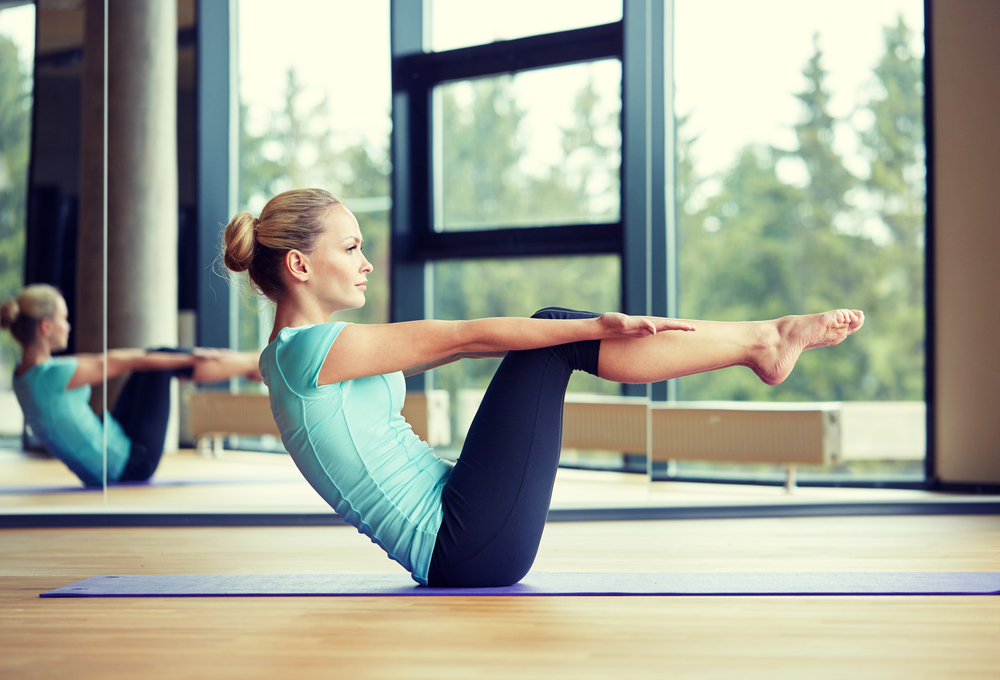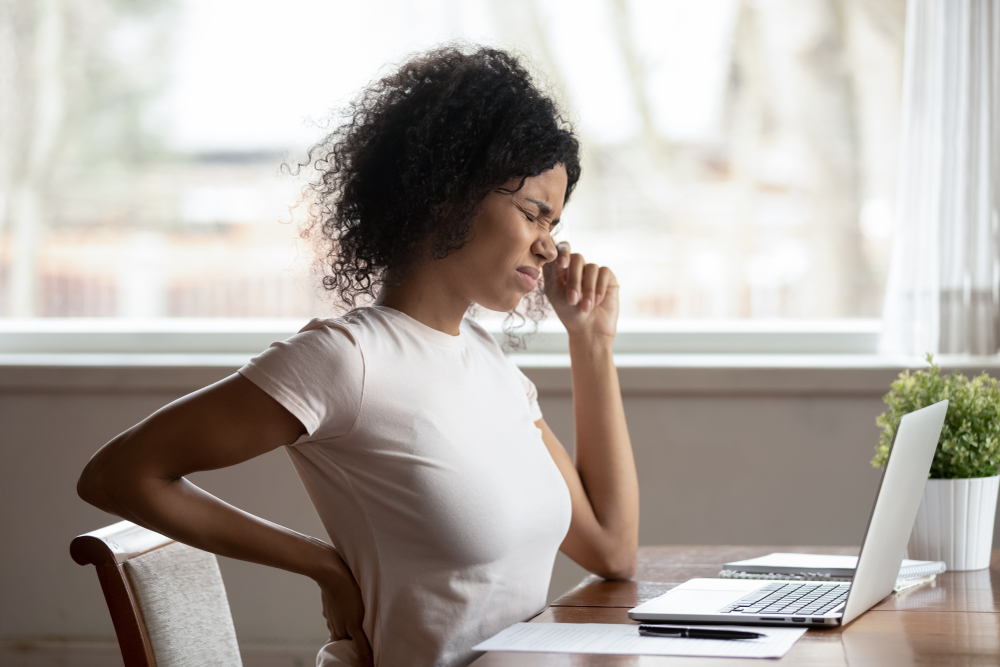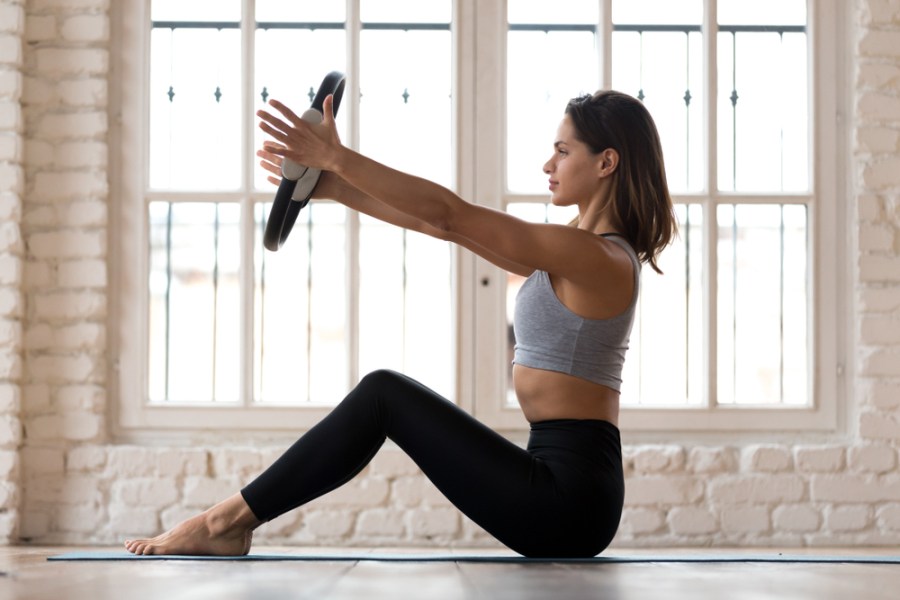Pilates has become hugely popular in the fitness world over the past few years – but it’s been around far longer than that. We’re taking a closer look at what Pilates is, what the main health and fitness benefits are, plus some handy basics for beginners…
German-born Joseph Hubertus Pilates (1883-1967) was way ahead of his time. After a childhood plagued by asthma, rickets and rheumatic fever, he dedicated his life to studying and finding wellness. Pilates studied human anatomy, yoga and martial arts. is, combined with his professions as a gymnast, bodybuilder, diver and boxer, led to his total body transformation – he posed for anatomical charts – and created a system of exercise that is hailed by many today as the ultimate exercise for a perfect body.
In the 1920s, Pilates emigrated to New York where he opened an exercise studio and soon gained an enviable reputation among the dance and ballet world. Word spread about the benefits of his exercise system. Known for building strength and flexibility, Pilates is still used by top ballerinas and dancers as well as athletes.

What is Pilates?
Pilates is a body conditioning system of precisely executed exercises that sets the body in correct alignment so that muscles can be targeted and exercised effectively. It was created by Joseph Hubertus Pilates (1883-1967), who first brought his exercise system to New York in the 1920s.
Benefits of Pilates
- Tightens and tones your body
- Calms your mind
- Strengthens your spine
- Improves flexibility
- Creates a long, lean look
- Improves coordination
- Flattens your belly
- Improves your posture
- Corrects imbalances
- Prevents injury
- Improves athletic performance
- Improves mind-body awareness
Pilates improves posture, tones and strengthens the body and is known for giving a long, lean look and at belly. Pilates is also well known for its benefits as a rehabilitation tool and helping to protect against injury, aches and pains.
It brings the body back into balance through easing tight muscles and strengthening weak ones. Studies show Pilates can strengthen your immune system, protecting you from illness. It can even boost your sex life by strengthening your pelvic floor.
Pilates exercises begin from your centre or ‘power house’, helping to develop a strong core. is ‘centring’ or focusing also helps to connect your mind with your body, shutting out external stress and creating a calming effect. Modern Pilates still teaches the same fundamental exercises but, with time, experts have adapted and modified some of the moves to suit different age groups, body types and goals.

How Pilates helps us in the modern world
Modern life is not kind to the human body. Machines have taken over many of the chores that previous generations cursed, such as scrubbing floors and clothes, walking or cycling to work in the rain and snow and fetching and carrying wood and water. While it’s wonderful that we don’t have to endure these hardships, the cost to our bodies has been huge and our posture, weight, health and wellbeing have suffered enormously as a result.
Sitting at computers, desks and cars has given us hunched backs, rounded shoulders and fat stomachs. Slumping on the sofa watching TV has given us weak backs, flabby bottoms and poor circulation. These factors lead to back and neck pain, headaches and increased stress caused by poor breathing. Slump over and try to take a nice deep breath. Now stand up tall and try again. Can you feel the difference
Pilates and posture
Pilates can help to address many modern ailments and is routinely prescribed by physiotherapists, doctors and osteopaths as a remedy for back, shoulder, postural and joint problems. The precise, controlled nature of Pilates makes the exercises extremely safe for everyone and the focus on body and joint alignment can help undo postural problems. Many issues that people take to their GP, including back and neck pain and urinary incontinence, can be rectified with regular Pilates exercises. It strengthens where the body is weak and lengthens where it is tight.
Developing core strength helps prevent back pain and enables the body to move more freely. Pilates also ensures the spine is regularly moved safely through all of its natural range of motion – exion, extension and rotation help it stay supple and strong. Many celebrities also frequently hail Pilates as their exercise of choice for a slim but strong ‘red-carpet-ready’ body. It’s perfect for toning trouble zones such as bottom, thighs, arms and tummy.
Basic Pilates principles for beginners
Looking to begin your Pilates journey? Start by familiarising yourself with the following basic Pilates principles for beginners…
- ALIGNMENT: If one part of the body is misaligned, it affects the whole body. Working in correct alignment helps improve the body’s function and wellbeing.
- BREATHING: Pilates exercises are coordinated with the breath to aid control. Breathing is full and relaxed to help power the body.
- CONCENTRATION: Focusing the mind and fully committing to each move helps ensure maximum benefits and encourages relaxation.
- CONTROL: Every Pilates move is executed with careful control. The slower the move, the harder you have to work.
- FLOW: Using slow, controlled, flowing movements synchronised with the breath enables the body to move as nature intended.
- CENTRING: All Pilates moves begin from the centre or core. The exercises help develop an internal corset, supporting your spine and flattening your abs.









